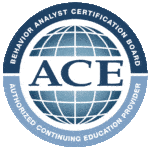“What” Questions for Speech Therapy
Written By: Michelle E. Sisto, MS CCC-SLP TSSLD S

Questions are the basis of many interactions that occur on a daily basis. By developing the ability to understand, answer, and ask questions, receptive, expressive, and pragmatic language skills needed to support later developing skills. These questions are vital to a child’s development because they support conversation skills, increase vocabulary, and demonstrate understanding of language.
Targeting “Wh” Questions
There are many open ended “wh” questions, such as who, what, where, when, and why. The first type of “wh” questions to usually be targeted are “what” questions. This is because the concept of “what” is more concrete than other “wh” concepts. The concept of “what” refers to actions and objects. To answer the question of “what” appropriately, a child needs to understand how to answer and to execute the correct response. This is a large task and can be an intimidating one, if one is unsure where to begin.
When beginning to target “what” questions, there are a few different considerations. The types of questions you select are important, along with the different activities that are used to work on these target questions. Along with many other speech and language skills, targeting “wh” questions should occur in a natural environment. This is a family centered approach that allows families to easily embed therapeutic activities into their everyday lives and routines. By utilizing naturally occurring opportunities, children are learning “what” questions during everyday situations , where they can practice and learn within the typical context of their lives, where these skills need to be utilized.
Activities for Targeting “What” Questions
Below are sample activities to target “what” questions, naturalistically to teach the skill and have fun while doing it!
- Lift the Flap Books → Read “lift the flap” books with the child. While reading the book, knock on the flap with the child. As the flap gets lifted, point to the picture and ask the question “what’s this?” Pause to allow the child time to respond and then model the appropriate response, while pointing to the target picture.
- Park/Playground → At the playground, follow the child’s lead and explore the equipment and the environment. While the child uses the equipment, such as climbing the monkey bars or sliding down the slide, ask “what [are you] doing?” Pause to allow the child time to respond and then model the appropriate response, before asking the question again and initiating a secondary pause.
- Cooking/Meal Prep → When cooking a meal together, ask the child questions to facilitate conversations. This looks like “I need to cut. What could I use to cut with?” Pause to allow the child to process and respond before providing a model of the correct response.
- Visit to a farm/play with a play farm → While visiting a farm or playing with a toy farm, model animal sounds for each animal observed. After the model, ask “what says baa” to encourage the child to label [“sheep!”] the animal associated with the modeled sound.
- Dressing/Undressing → During dressing or undressing, withhold clothing items. Pretend to be forgetful and ask the child “what goes on your feet” to have them identify and label the clothing item [“shoes!”] before it is put on or taken off.
- Arts and crafts → While using art supplies, ask the child to give you specific materials to complete the project. Ask the child “what should i use to cut the paper” and “what should i use to glue the paper”. The child can respond to the question verbally while providing the appropriate material in response to the question.
Through these activities, language is facilitated in naturally occurring instances that help carryover and generalization of the learned skill. These activities promote expressive, receptive, and pragmatic language by working with the child on engaging in interactions while understanding and expressing themselves.
Date Posted:
August 23, 2022
Share this blog
Categories
Recent Blog Posts








